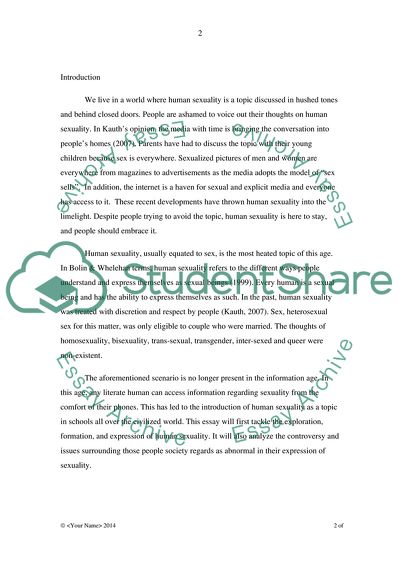Cite this document
(In What Context Do People Explore, Form and Express Their Sexuality Literature review Example | Topics and Well Written Essays - 3500 words, n.d.)
In What Context Do People Explore, Form and Express Their Sexuality Literature review Example | Topics and Well Written Essays - 3500 words. https://studentshare.org/gender-sexual-studies/1822333-in-what-context-do-people-explore-form-and-express-their-sexuality-and-what-political-historical-and-cultural-conditions-do-they-grapple-with-as-they-do
In What Context Do People Explore, Form and Express Their Sexuality Literature review Example | Topics and Well Written Essays - 3500 words. https://studentshare.org/gender-sexual-studies/1822333-in-what-context-do-people-explore-form-and-express-their-sexuality-and-what-political-historical-and-cultural-conditions-do-they-grapple-with-as-they-do
(In What Context Do People Explore, Form and Express Their Sexuality Literature Review Example | Topics and Well Written Essays - 3500 Words)
In What Context Do People Explore, Form and Express Their Sexuality Literature Review Example | Topics and Well Written Essays - 3500 Words. https://studentshare.org/gender-sexual-studies/1822333-in-what-context-do-people-explore-form-and-express-their-sexuality-and-what-political-historical-and-cultural-conditions-do-they-grapple-with-as-they-do.
In What Context Do People Explore, Form and Express Their Sexuality Literature Review Example | Topics and Well Written Essays - 3500 Words. https://studentshare.org/gender-sexual-studies/1822333-in-what-context-do-people-explore-form-and-express-their-sexuality-and-what-political-historical-and-cultural-conditions-do-they-grapple-with-as-they-do.
“In What Context Do People Explore, Form and Express Their Sexuality Literature Review Example | Topics and Well Written Essays - 3500 Words”. https://studentshare.org/gender-sexual-studies/1822333-in-what-context-do-people-explore-form-and-express-their-sexuality-and-what-political-historical-and-cultural-conditions-do-they-grapple-with-as-they-do.


